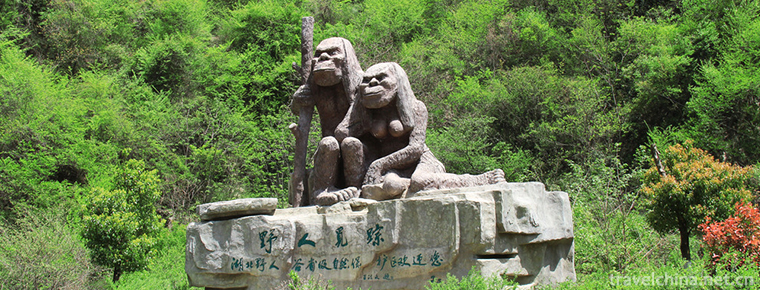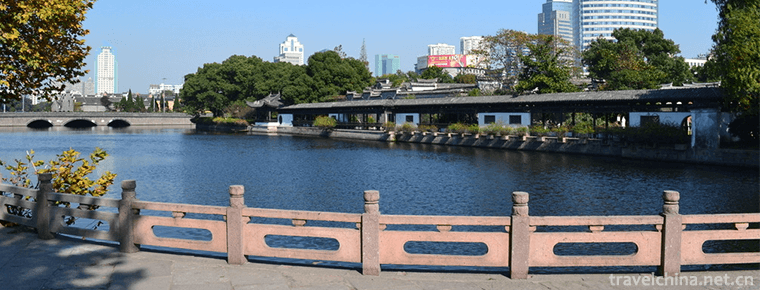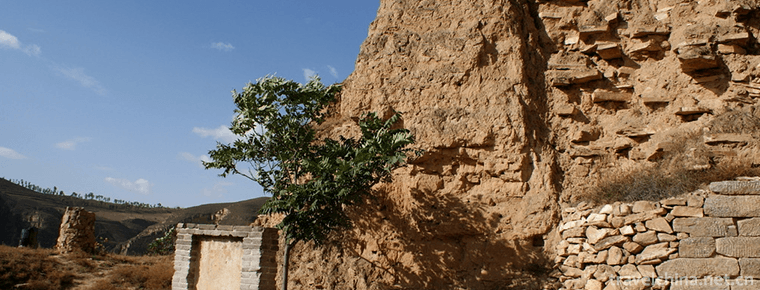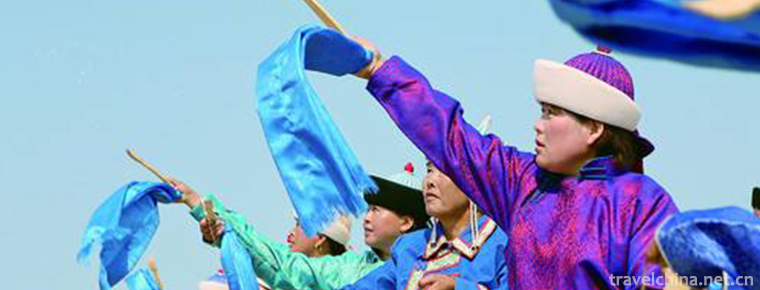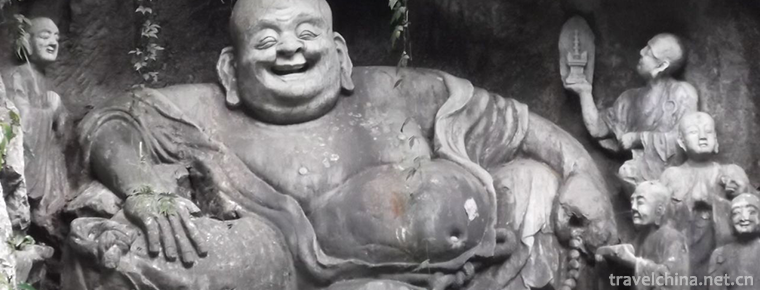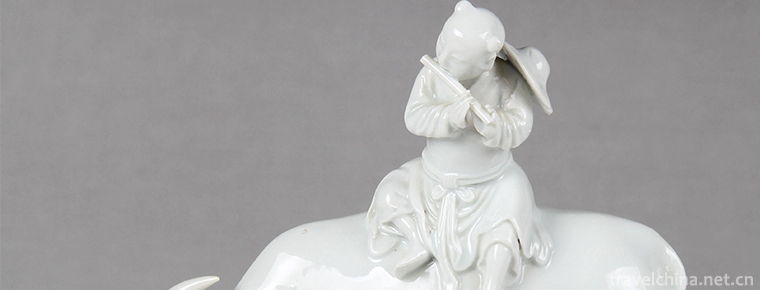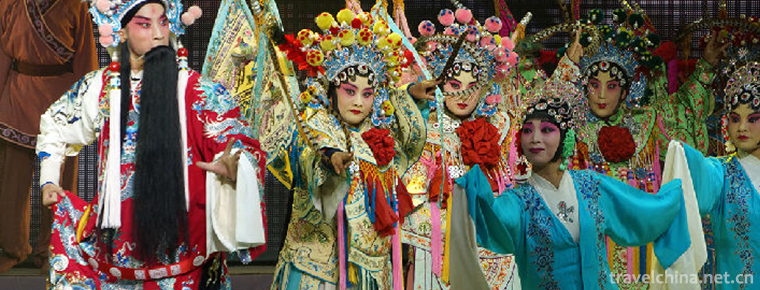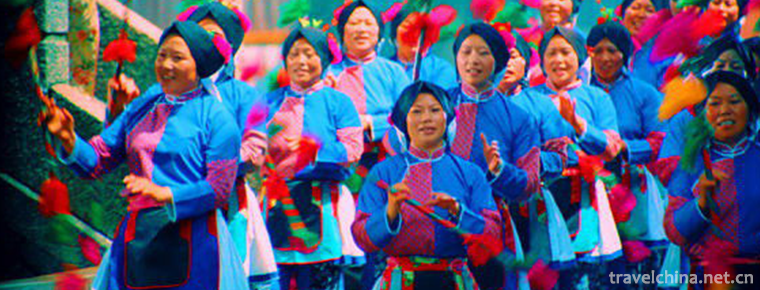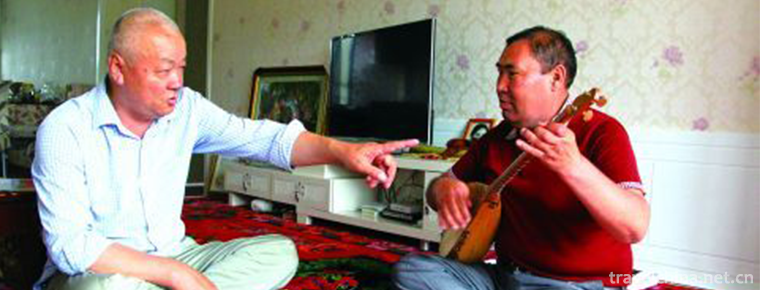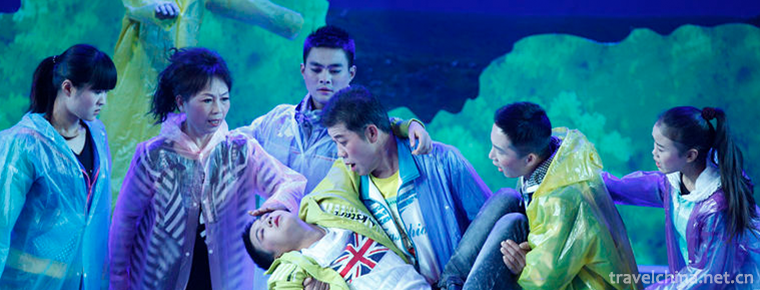Jiujiang folk songs
Jiujiang folk songs
Jiujiang folk song is a traditional folk song that is popular in the surrounding areas of Chengmen, Ma Huiling, Huanglao Men, Lion and Chengzi Town in Jiangzhou District, Jiujiang City, Jiangxi Province. The theme of Jiujiang folk song is extensive. It is mainly about arousing people's enthusiasm for work, feelings of life and love between men and women. The form of Jiujiang folk song is divided into high-pitched, flat-pitched and low-pitched. Because there are only three tones in each song, it is also called three-tone and three-tone folk song. Its singing form is extremely simple, and the lyrics are very rich. It has been selected into the third batch of national intangible cultural heritage catalogues.
On May 23, 2011, Jiujiang Mountain Songs were listed in the third batch of national intangible cultural heritage list with the approval of the State Council.
historical origin
Located in Jiangzhou District of Jiujiang City in the north of Jiangxi Province, beside Lushan Mountain and Yangtze River, it is across the river from Huangmei in Hubei Province and Susong in Anhui Province. Ancient for "Wutou Chuwei". It covers an area of 873 square kilometers and has a population of 340,000. With its unique geographical environment and profound cultural heritage, it is known as "Yuanming Hometown, Oriental Pastoral". Among many local cultures, Jiujiang Mountain Songs can be called a unique one. As for the origin, there is no way to verify, but there is a folk song spread in the countryside: "From Tang Dynasty to Song Dynasty, from ancient times to today, ancestors have planted fields, passed down songs from generation to generation, singing a folk song to relieve depression." Singing folk songs is a custom handed down here from generation to generation.
main features
Jiujiang folk songs have a wide range of themes, and most of the lyrics are mainly about work and life feelings. Jiujiang folk songs
It is easy to remember, easy to sing, flat in form, natural and smooth in tone and simple and moving in content. The tunes can be divided into high, flat and low tunes. High tune, wide sentence width and long procrastination. The flat tone is relatively low and the sentence is even. Low-pitched pronunciation, used to sing long stories, commonly known as "songbook". Among the numerous folk songs, "three tones" are the most prominent in Jiujiang folk songs. It is also incomparable with other original ecological songs. Take the "1) 25" five sentences three tones palace mode as an example, the five levels "5" above the main tone, the "2" as the lever, the downward "51 1.21 1" as the salvage, and the "25 2521 25 -" continuous jump up and down, so as to make the tune quiet and dynamic. Form dynamic aesthetic feeling and promote the development of melody. The Pingqiang folk song "New Scooter Four Heads" best reflects this feature.
Inheritance value
Jiujiang Mountain Song has rich local rhyme and strong artistic appeal. This is precious wealth left to us by our ancestors.
It is also the spiritual food of the masses. It is formed by the working people's "oral transmission, improvisation and song" way of singing, but the singing is catchy. In production, fatigue can be eliminated, enthusiasm for work can be increased, thoughts and feelings can be exchanged in life, and passion for life can be increased. At the same time, passion for a better life can be expressed.
Jiujiang folk song is not only a Lyric poem, but also a textbook. It is a cultural symbol living in the people's oral language. The lyrics cover not only labor and love, but also astronomy, geography, grain, flowers and birds, philosophy of life and historical stories. It has multiple functions such as emotion, interest and knowledge. Among the 50 titles of "Integration of Chinese Folk Songs (Jiangxi Volume)" published in 1996, Jiujiang's "Three-tone Tune" is the most unique one, providing rich materials for musicians. His masterpiece "The Four Heads of a New Scooter" won the first prize in the adaptation of folk songs in East China and the first prize in singing. Published successively in "Music Newsletter", "Tianjin Music", "Jiangxi Folk Song", "Heart Song Journal" and other publications, known as a wonderful flower in folk songs.
Inheritance situation
Jiujiang folk song was originally an indispensable part of the local people's life. People sing along with their sex and flow naturally. Jiujiang Sanshengqiang folk song is the spiritual food of the people. It expresses people's thoughts and feelings and enhances people's enthusiasm for work. In labor, people use poetry to explain grain, food, clothing and a bright future, and use interesting content to regulate the working atmosphere, speed up the pace of labor. In leisure time, people often use mountain songs to sing long stories and talk about the past and the present; the "three-tone" folk songs are the lyrics of people's love. The expression of love occupies a large proportion in Jiujiang folk songs, and the lyrics are mostly in parallelism. It is also a textbook of cultural knowledge to express people's hearts with clear language and ingenious implications. People sing the ancients in life, understand the history and Humanities knowledge, sing place names, learn to increase geographical knowledge, sing farming season, grain, enrich labor knowledge, sing long stories, improve literary knowledge, sing philosophy, teach people to make progress.
However, with the change of people's life concept and the change of value orientation of the younger generation, the enthusiasm of inheriting the ancient folk songs is losing, and the survival crisis of the original Jiujiang Sanshengqiang folk songs has arisen. All these are the social, historical and cultural backgrounds that cause the Jiujiang folk songs to face endangerment.
protective measures
In this regard, the state has formulated a series of objectives, guidelines and working principles for the protection of intangible cultural heritage. Jiangzhou District seizes the opportunity to take advantage of this east wind and make great efforts to rescue and protect it. A large number of people have been organized to collect, record, classify and catalogue the "three tones" folk songs, establish complete files, and adopt recording, video recording, digital multimedia and other means. Record the "three tones" folk songs truly, comprehensively and systematically, and properly preserve the investigation data and related things. Collecting and sorting out more than 260 "Jiangzhou District Folk Songs Collection", including more than 100 "Sanshengqiang" folk songs. Important protection should be given to influential representative successors. At the same time, we should strengthen the training of inheritors (heirs), and pay attention to the formation of self-awareness among young people. We should organize the backbone of young people's folk songs to spread singing skills in key areas of folk songs. The County Cultural Department will also organize more than 100 folk song competitions with the Chengmen Township Government, with more than 10,000 participants. The use of radio, television, network, newspapers and other media to carry out extensive publicity of the "three-tone" folk songs, regularly hold folk songs concerts, expanding the impact of the "three-tone" folk songs. The county government has set up leading group, expert guidance group and intangible cultural heritage protection center to study and formulate measures to rescue and protect the "three tones" folk songs. With more than 300,000 yuan of financial investment at county and township levels, Chengmen Township, the county's home of culture and art, has set up a special cultural activity center to give the masses a place to sing and a platform for their activities.

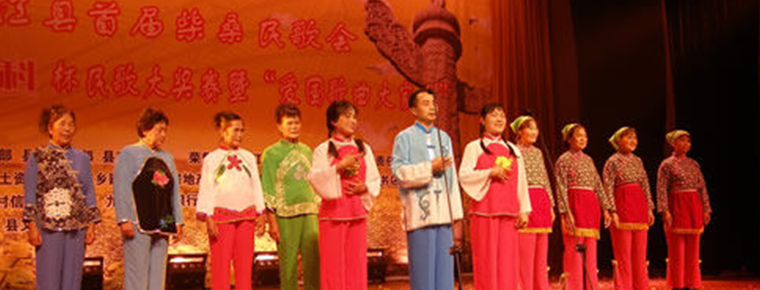
-
Shennongjia Forestry DistrictHubei Shennongjia
Shennongjia Forest District, referred to as Shennongjia for short, was established in 1970 with the approval of the State Council and directly under the jurisdiction of Hubei Province. .
Views: 234 Time 2018-10-28 -
Tianyi Pavilion and Yuehu Lake Scenic Area
Tianyi Pavilion is located in Haishu District, Ningbo City, Zhejiang Province. It was built in the middle of Ming Dynasty. It was presided over by Fan Qin.
Views: 128 Time 2018-12-07 -
Hohhot Laoniuwan Tourist Area
Laoniu Bay is located at the entrance of Shanxi-Shaanxi Grand Canyon. This is the Great Wall, the only typical parallel section of the Yellow River. The widest part of the river is not more than 100 m.
Views: 159 Time 2019-01-16 -
Shandong Zhisheng Tangquan Tourist Resort
Shandong Zhisheng Tangquan Tourist Resort is located in Linyi City, Shandong Province. It is invested and constructed by Shandong Chenshi Home Estate Co., Ltd..
Views: 420 Time 2019-02-08 -
Bogda Ula Festival
The sacrifice of Bogdahura (Shenshan) is one of the earliest forms of Mongolian creative culture in China. It is the product of national culture, which is formed by historical accumulation and plurali.
Views: 90 Time 2019-04-04 -
The Legend of the Cloth Bag Monk
From the end of Tang Dynasty to the Five Dynasties, the monk of Fenghua, Ningbo City, Zhejiang Province, named Tingzi, was an eminent monk of Hou Liang in the Five Dynasties.
Views: 380 Time 2019-04-04 -
Korean Traditional Wedding
The traditional wedding ceremony of the Korean nationality in China is formed by the continuous integration and development of the Korean ancestors with the Han nationality and other minority.
Views: 162 Time 2019-04-16 -
Sintering Techniques of Dehua Porcelain
Dehua ceramic firing technology is a traditional handicraft in Dehua, Fujian Province. Dehua ceramic production began in the Neolithic Age, flourished in the Tang and Song Dynasties.
Views: 159 Time 2019-04-26 -
a kind of Shanxi opera
Shangdang Bangzi is one of the four Bangzi in Shanxi Province. It is popular in the two cities of Shanxi Province, namely, the Minister of southeastern Shanxi Province and Jincheng City (formerly know.
Views: 163 Time 2019-06-13 -
Womens clothing in Yongzhishui Townshi Suzhou
The women's clothing in Yongzhishui Township, Suzhou, is an outstanding representative of the Han nationality's clothing. It is a typical and representative clothing of the working people in Wu area. .
Views: 271 Time 2019-06-17 -
Toleau
The phonetic translation of "Toleau" in Kazakh means "lyric", "lyric poem", "revelation song" and "propaganda narration". It is one of the oldest form.
Views: 423 Time 2019-06-24 -
Fallen Drama zhui zi xi
Fallen Drama, a traditional drama in Shenze County of Hebei Province and Suzhou City of Anhui Province, is one of the national intangible cultural heritages..
Views: 235 Time 2019-08-16
